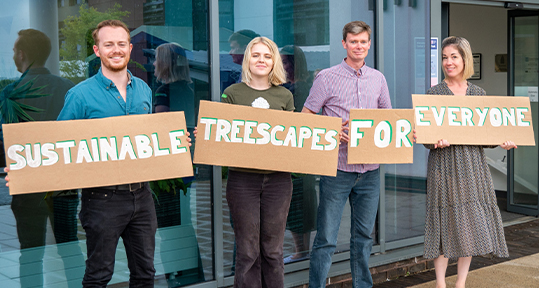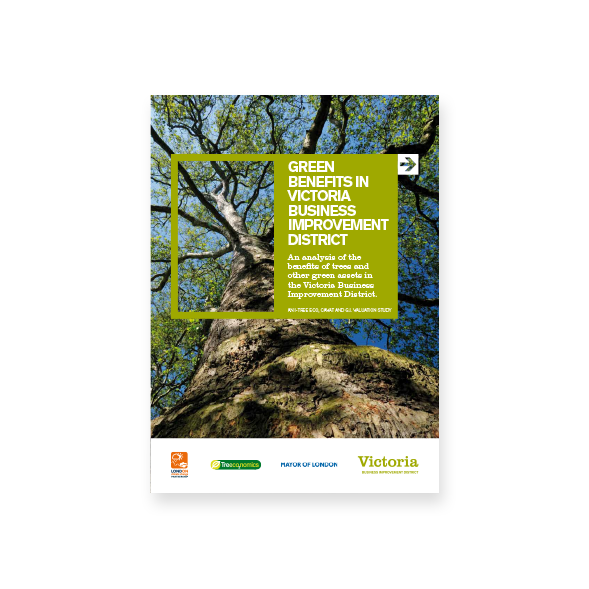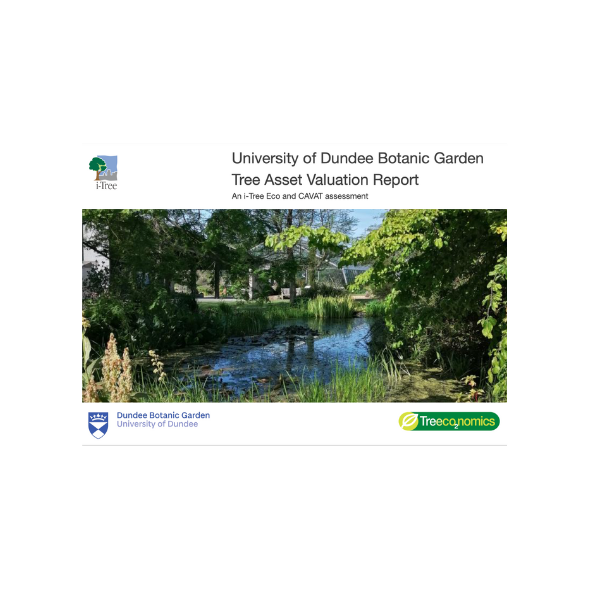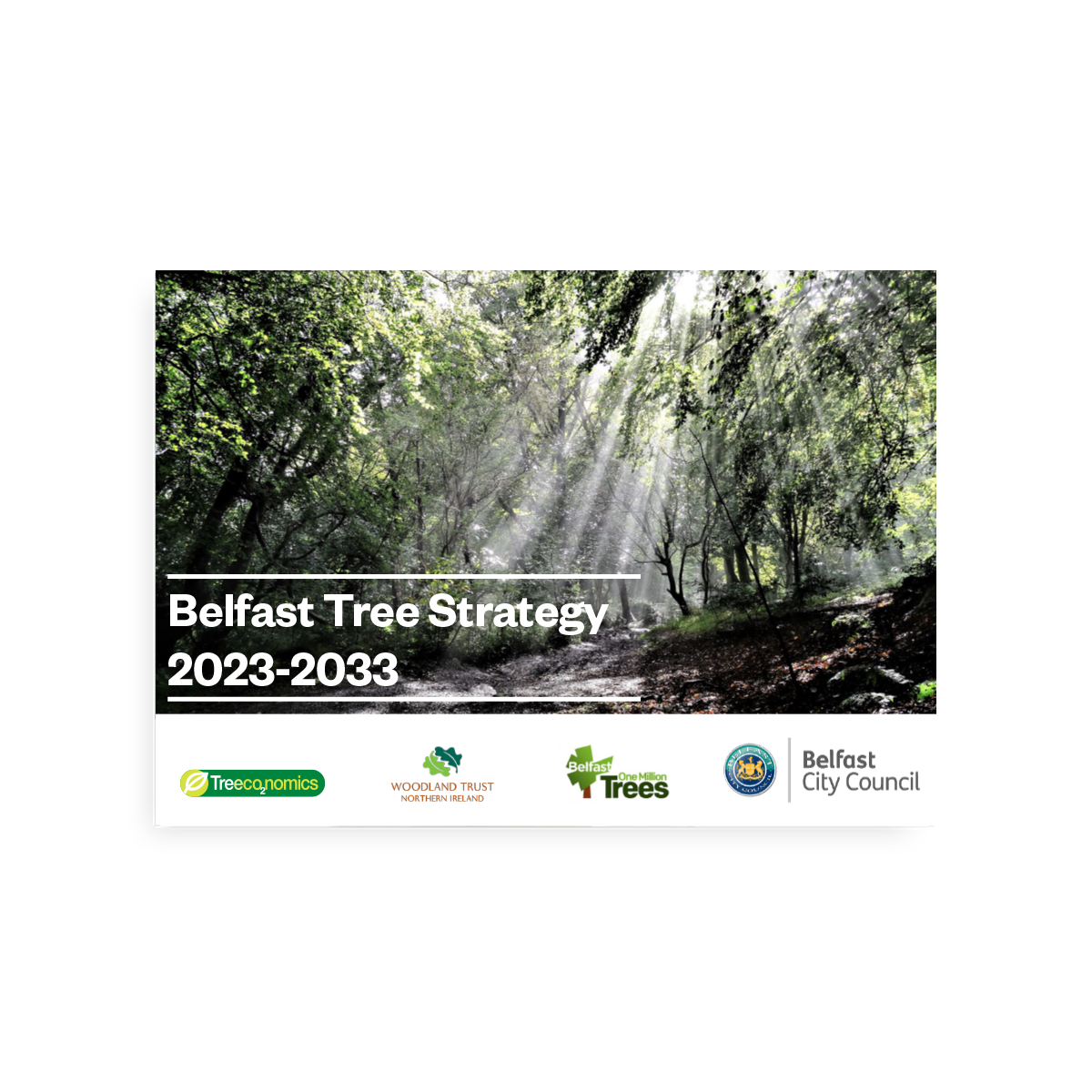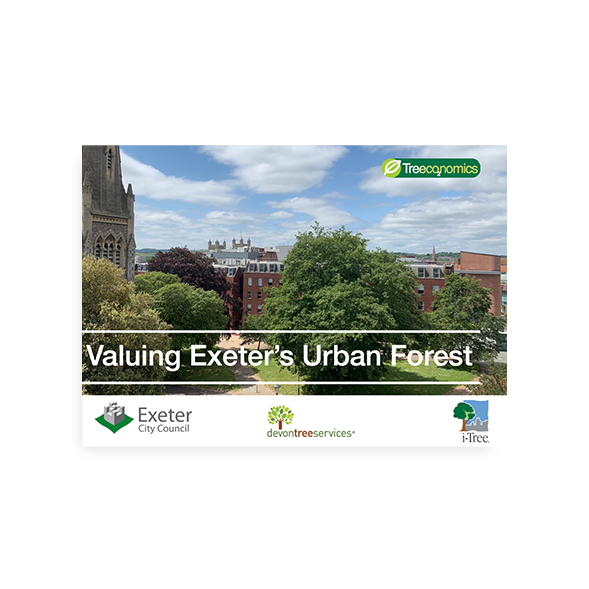Green infrastructure can deliver benefits to urban areas. Trees in particular can provide a wide range of benefits (or ecosystem services) such as storing carbon, reducing the urban heat island effect and improving air quality. Understanding the structure, function and value of Victoria Business Improvement District’s green infrastructure can inform decisions that will improve human health and environmental quality.
This report presents a baseline quantitative assessment of the air pollution, amenity, carbon storage and sequestration benefits of trees as well as the storm water and surface temperature benefits of existing green infrastructure in the Victoria BID. This is accompanied with detailed information on the character of the Victoria BID’s existing treescape. This report also estimates the additional benefits that could be generated if the 5% canopy cover increase target set by the Mayor of London for Greater London, by 2025, and the potential green roofs and ground level green spaces investments identified by the BID are both realised in Victoria.
This assessment was conducted using the i-Tree Eco model (also known as UFORE1), as developed by the U.S. Forest Service, Northern Research Station, Capital Asset Valuation for Amenity Trees (CAVAT) and tools within the Green Infrastructure Valuation Toolkit. It considers the impact of public and private trees as well as other types of green infrastructure assets including green roofs and gardens.

